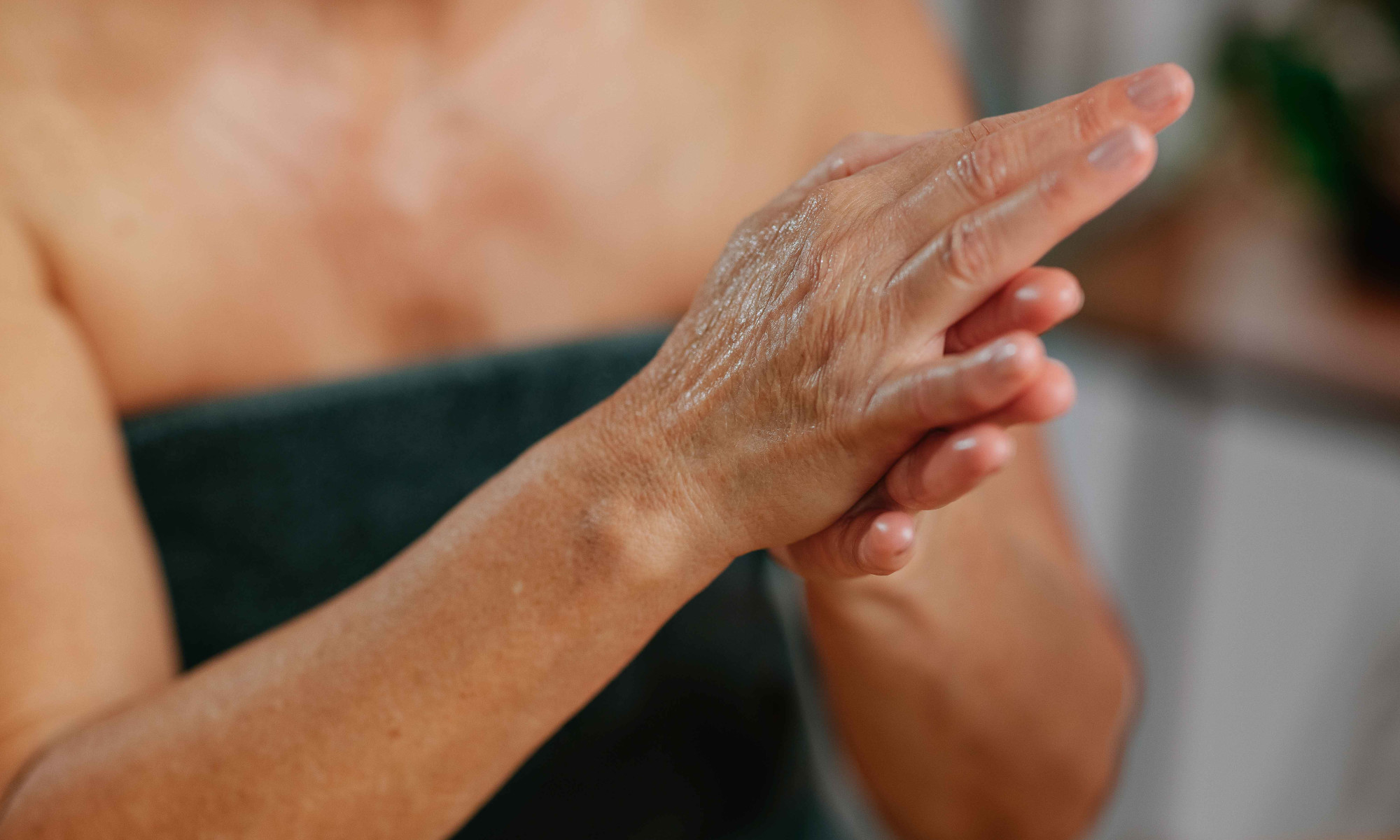Our Collective Body
The importance of dissolving boundaries between ourselves and other beings The post Our Collective Body appeared first on Tricycle: The Buddhist Review.

Wisdom tells me I am nothing;
Love tells me I am everything.
Between these two,
My life flows
—Sri Nisargadatta Maharaj
I love these lines above from Sri Nisargadatta Maharaj (1897–1981). He was a remarkable nondual Indian teacher from Mumbai, India, and the author of I Am That, which my teacher described as “the greatest spiritual textbook of the 20th century.” These few lines from “Mr. Natural” (a rough translation of his name) remind us we can go beyond a partial, boundaried, limited sense of self in either direction. You can explore inward, finding nothing, identifying with nothing, until your sense of self dissolves completely. This is seeing through the lens of wisdom. Or you can explore outward, including everything in your field of experience, expanding your sense of self until you identify with everything—the whole cosmos, the embrace of love.
[Maharaj] says, “The whole world arises in this very body.” [This includes] both the “inner world” that we call me—my body, heart and mind, my story and issues and history—and the “outer world” of people, places, and situations—everything that appears as not-me. It’s important that you can distinguish between that which is “self ” and “not-self,” but take your “skin-boundary” to be a fundamentally true boundary and you find yourself isolated and alienated from life’s totality.
Sometimes that boundary melts exquisitely, revealing a profound intimacy with all that is. It can happen spontaneously, through nature or music or drugs or sex or danger. That intimacy gets consciously cultivated in meditation. Experiences like this show you you’re not as separate as you think, and inevitably raise deep heart questions about our true relationship with each other. How separate are we really? If I am fundamentally unseparate from all other beings, how do I reconcile the personal concern for my wants and needs with yours and theirs—all these so-called “others.”
This dichotomy plays out socially—we make boundaries not just between self and world but also in the toxic tribalism of us and them. Look at the history of war and religion, with its goodies and baddies, chosen ones and heretics. Look at contemporary politics. Look at nationalism and anti-immigrant rhetoric—racism, homophobia, and all forms of prejudice and marginalization. Look at the tragedy of how we demonize each other, blame each other, exclude each other from our hearts.
Tragically, many of us are as yet unable to extend our “us”-boundaries very far. Boundary identification follows a clear developmental progression. It goes from egocentric—“It’s all about me”—to family-centric—“I love my family, and I’ll act to nurture and protect them,” and from there to “group-centric,” along more or less tribal lines, whether a football team, religious or political affiliation, nation-state, or ethnicity. Any group that creates insiders who are “my people” inevitably creates outsiders who are not. They are other. Different, opposite, and in their otherness they become irrelevant and, therefore, excluded from my heart. That is how we demonize immigrants, despise our political opposites—caught in the same dynamic that runs from family feuds to geopolitical conflicts.
When I was a teenager, we drew lines of group identity around our taste in music and clothing, marking you as Goth, punk, nerd, or the hilariously named modern romantic. Narrow group identity is really an adolescent level of development. A group identity is comforting, but seduced by the promise of belonging to an “us,” we don’t see the danger of creating a corresponding “them.” As you increasingly feel your true body to be the whole universe, all of life present right here in your awareness, you can no longer ignore the implications: All beings are in you, and you in them. Your practice has to become one of growing into this collective, inclusive, infinite body. We’ll explore three aspects of that deep collectivity: solidarity, community, and love.
Solidarity, Community, and Love
On meditation retreats, people often have expansive experiences of a deep interbeing with all things, touching the truth of Walt Whitman’s celebrated line: “I am large—I contain multitudes.” These experiences powerfully demonstrate that the “flesh boundary” of me and the group boundary of my particular us are mere abstractions. We coexist—we inter-are (to use Thich Nhat Hanh’s evocative term)—in deep solidarity with all of life. The trouble with meditation retreats, though, is this: They put a lot of emphasis on meditation! At the end of the retreat, you’ve heard all these great meditation instructions but very little instruction for the rest of life. You’ve now got great guidance for the twenty or thirty or sixty minutes of your daily formal practice, but all you’ve got for the other twenty-three hours are the two classic all-purpose injunctions: “Be mindful” and “be compassionate.” Those are great instructions . . . but they need a little fleshing out, and applying them in a messy, relational world, with other human beings, is challenging. We’re in a fundamentally nonseparate relationship with at least 7 billion other humans, plus all other planetary life, plus those yet to be born, and whatever others inhabit all other realms, galaxies, universes. We’ve got some serious expanding to do in terms of what and whom we identify with. We need to get our asses from self-centric to family-centric to group-centric to world-centric to cosmos-centric before we run out of time and air and water and space and die, dissolving back anyway into the primordial oneness of all things (life will reassert its infinite all-inclusiveness on you eventually, like it or not, even if it is merely in the form of the earth reabsorbing your rotting corpse).
We don’t want to put others out of our hearts. But look at the conflicts in your own life—at work, in your family, etc. Any conflict is dependent on your making the other wrong or bad in some way. Of course, the other is equally convinced of their own rightness, but just as it takes two to tango, conflict gets a real hold only when both parties invest in rightness and wrongness. It is natural to disagree, but when you invest in your own position, you shut down your heart, ignoring Rumi’s famous invitation to meet him in that field, “out beyond rightness and wrongness.”
Maybe your intention is already cosmos-centric, universe-spanning. Including all beings everywhere is an explicit orientation in Buddhism, as evident in many verses embodying the practice of loving-kindness, or metta:
May all beings be well
May all beings be safe from harm
May all beings in all the realms in all the universes
know peace and ease and liberation.
But if you’re anything other than absolutely limitlessly blown wide open, then you probably have at least some “us-blindness,” a boundary around who you feel like your collective is. We identify most primarily with what we’re exposed to: family—because there’s so much shared time and history and experience—as well as those who are familiar to us through repeated exposure—neighbors, colleagues, those we interact with regularly. This is why cities are more liberal-minded than rural areas: familiarity (contrary to the usual expression about contempt) actually breeds acceptance. If you live in a multiethnic neighborhood, if you see same sex couples holding hands on your street, if you have a transgender colleague, then those things become your normal and enter more easily into the “us” of your collective identity. If you experience only a narrow slice of what constitutes “normal,” then the boundaries tend to be more tightly held. (In polling about immigration, areas with the strongest anti-immigrant views are those with the fewest immigrants!)
We fear what we don’t know and fill in the gaps with our own imagination. I live in a village of 700 people in rural southwest France. When we moved here, in 2005, to establish our meditation center, my wife and children arrived in three flavors of exotic: brown-skinned, Buddhist, and British. People saw us through the lens of a certain suspicion, born mostly of unfamiliarity with those “three Bs,” but over time, meeting other parents at the school gates, chatting in the boulangerie, participating in local events, human contact proves more powerful than prejudice.
Expanding your us-field needs to be a conscious practice if you want to genuinely include all beings in your heart and consciousness.
◆
© 2021 by Martin Aylward Awake Where You Are: The Art of Embodied Awareness. Reprinted by arrangement with Wisdom Publications.

 AbJimroe
AbJimroe 
































